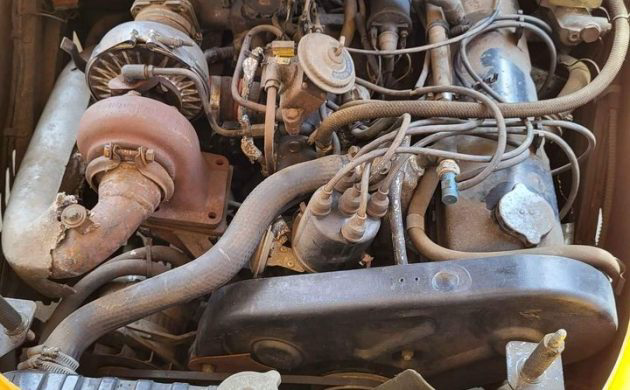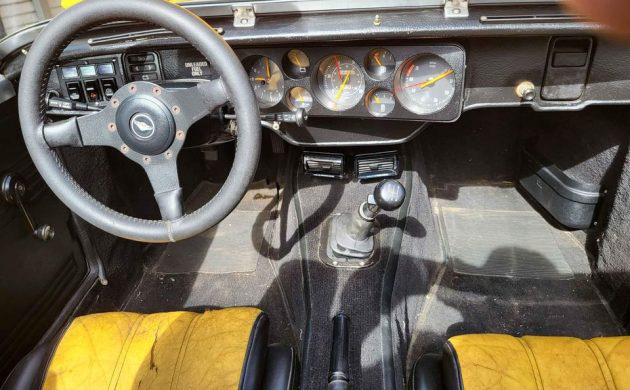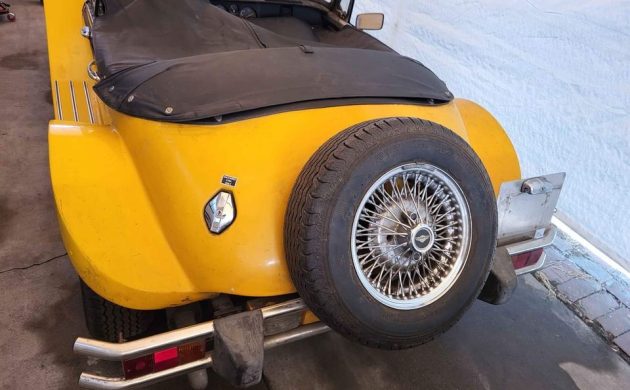Before researching this tip sent over by T.J., I had never heard of Panther Westwinds and its predilection for creating retro-classic fiberglass roadsters. The company was founded in Britain in 1972 by Robert Jankel, who trained as an engineer. His first automotive effort was the J72, evocative of Jaguar’s SS100, though broader in the beam. It was built around Jaguar XJ mechanicals but it cost almost twice as much as a contemporary Jag. Still, the car sold some 500 copies. Jankel didn’t particularly require success in order to expand – his fertile mind constantly generated ideas for new cars. Some, like the Lazer, were made in vanishingly small numbers or not at all, remaining assemblages of body parts and mechanical bits. Others, like the J72 and, later, the De Ville (anyone know what famous Disney character drove a Panther De Ville – badly – in what movie?) and the Lima saw production numbers in the tens or hundreds. Today’s Panther Lima Turbo is offered here on facebook Marketplace for $8995; it is located in Stockton, California and you’ll need a trailer for retrieval.
The Lima borrowed its engine from the Vauxhall Magnum – a 2279 cc inline four-cylinder. But the normally-aspirated four produced only about 108 hp, not enough to distinguish the Lima from competitors launched by Morgan, Lotus and TVR. So for model year 1979, Panther reworked the engine to accept an AiResearch turbocharger. Output rose to 150 hp. To rock all that power, the chassis was redesigned. The gearbox is Vauxhall’s four-speed manual. Almost 900 Limas were made, but only thirty of these were turbos. This example has been stored for 37 years, and the seller notes he has not tried to run the car.
Compared to the De Ville – sold to celebrities and bearing Jaguar mechanicals like the J72 – the Lima was a downmarket car, selling for much less. The occasional Vauxhall (owned by GM) dealership would order a Lima for you if you wanted. Other than the more mundane mechanicals, Jankel utilized the center section of an MG Midget to build the Lima’s cabin. Its windshield/doors/vent windows ought to look familiar… The interior is unremarkable in dark plastic, managing to be even less charming than a donor Midget. The color-keyed seat upholstery is a bit kitschy for my taste. The car retains its convertible top and tonneau cover.
While the styling of the front end is reminiscent of a Bugatti, the rear is reminiscent of … nothing. The chunky fenders end unconvincingly in a scallop next to the tail. The spare hangs out in the air as if it’s an afterthought. None of these parts are integrated with the bumper. Panther under Jankel met the first of its many “ends” in 1980 when it went into receivership. The company was purchased by a South Korean company and managed to produce a few new creations before its next crash in 1999. Jankel repurchased the Panther name, and as far as we know, it remains in the family after his death in 2005, begging the question … will there be a sequel?





Have mercy! This is one ugly beast! Keep this in Stockton, don’t let it loose on us.
I’m with you, sad to say the lines are just not to my liking
These aren’t the most flattering photo angles, but I always found the Lima (and its similar Kallista successor) a pleasantly tidy design for what they were, not trying too hard to imitate a particular bygone model nor piling on every ostentatious cliche of neoclassical styling and ornamentation.
Surprised you haven’t come across Panther before, Michelle. It was well- publicisrd in UK in 1970s/ early 80s and actually had a good reputation for fit and finish.
That doesn’t really extend to the Lima featured here, though some people like them. These are not usually people you’d want too close for too long.
The turbo application is very rare, the price isn’t ridiculous, but the idea of owning this is not a comfortable thought.
Ah Martin. What would life be like if we knew everything! I’m glad I still don’t know all the species in the zoo; I guess I slept through that class on UK 70s/80s doorbusters.
I did come to understand that the fit/finish of the De Ville and others was… well, if not revered, then at least appreciated.
Martin: my Nov issue of Classic and Sportscar arrived, and lo, there on page 102 is a long article on Panther Westwinds!
This is an example of what happens when someone says, “I’ll take… just one more mushroom”.
One of Our Customers brought us a Turbo model to straighten out oil leaks & running issues.
Struggled to find replacement parts for a bit,finally found a supplier in the UK.
Not My cup of tea,but after We got things ironed out,the Customer was delighted.
After all,isn’t that what it’s all about ?
Ralph
I once sold a Panther Kalister for a customer but within a few days the seller asked me if I thought the buyer would want to sell it back to him as he regreted selling it. I said I would contact him and let him know. Well, about half an hour later the buyer phoned me and asked if I had a buyer for the car because he found that he was a bit too long in the leg for comfort. When I told him that the seller would love to buy it back he jumped at the chance, they did a deal, and I made commission on both sales. Win, win.
Great looking gauge cluster, I can live with the seats, and dual ashtrays! That routing of the turbo looks pretty sketchy, and it’s not even bolted in?!? Would modify the back for an inset spare. Nice find!
Not my cup of tea….. but possibly my 6th shot of teqiila!
The only thing that really bothers me about this car are the bumpers… Which look like they were purchased through Pep Boys in the eighties, and were intended for the (then current) Toyota pickup trucks!
There is a 1980 Panther Lima for sale in Langley southeast of Vancouver, Canada listed in Seattle Craigslist for 30k. The seller has a lengthy writeup, but there are no pictures. Seller says, “Production lasted from 1976 through 1982 with only 897 cars being produced. The Mark II model used a purpose-built chassis. The body was built of fibreglass in a roadster style reminiscent of an Allard or Morgan.
In total there were 30 Panther Lima Mark II vehicles built with a turbo. There were only 2 imported to Western Canada to Kentish House in Vancouver. Parts are still relatively easy to get.”